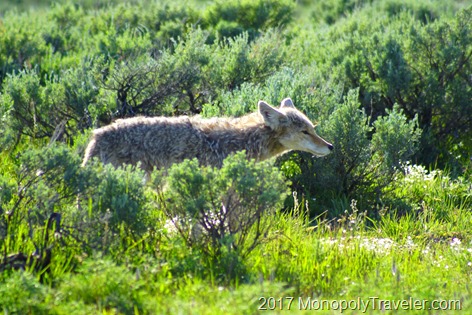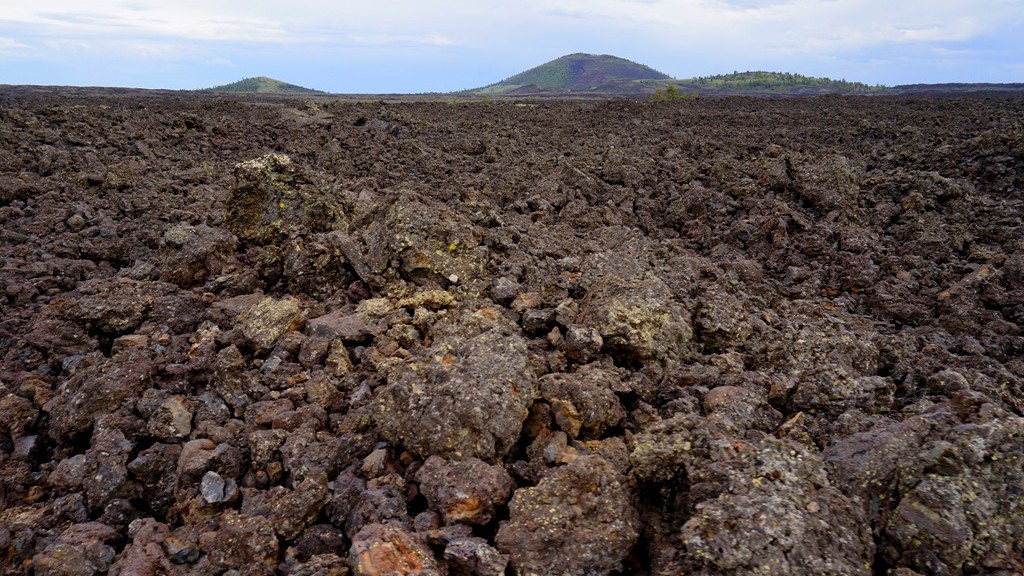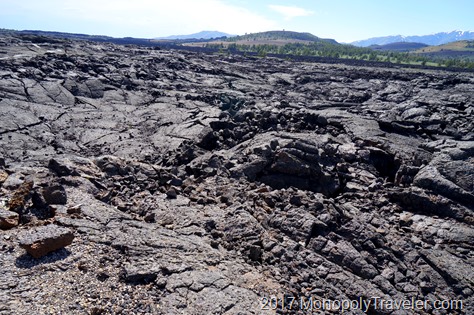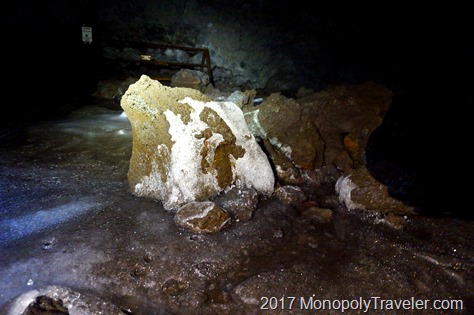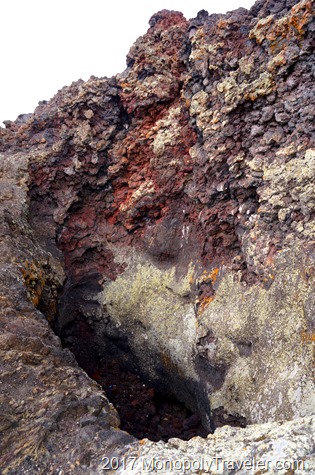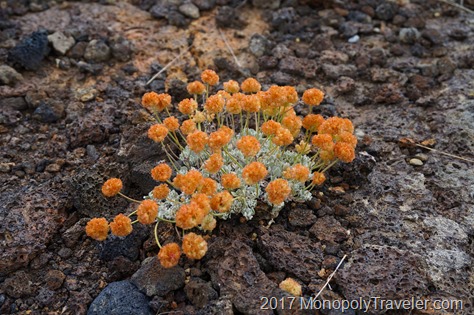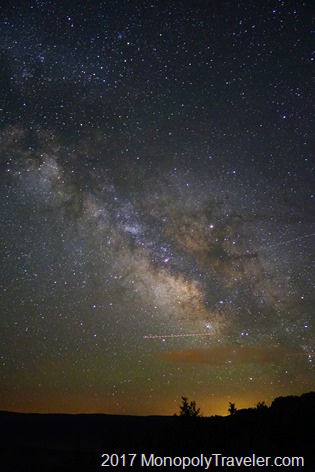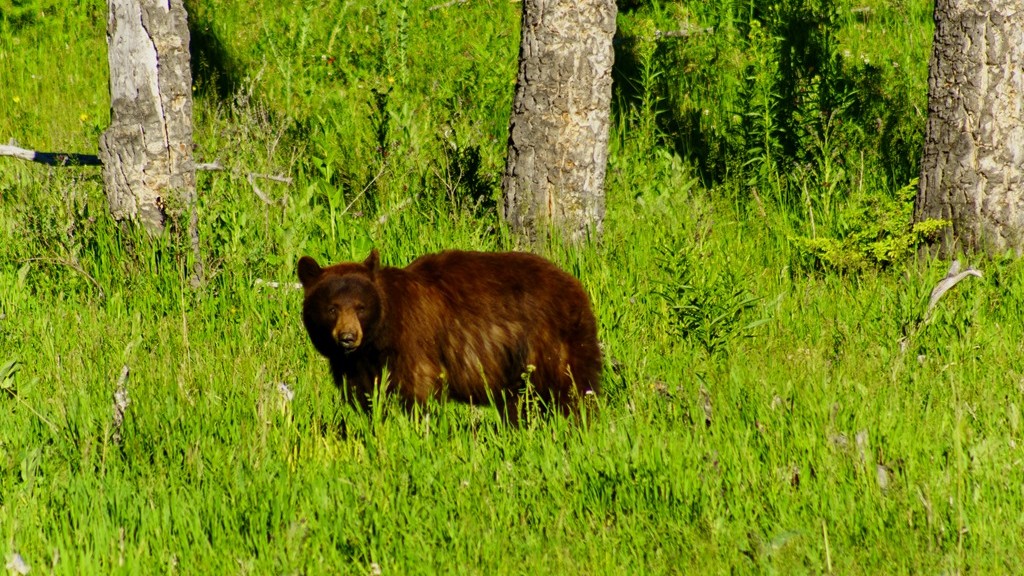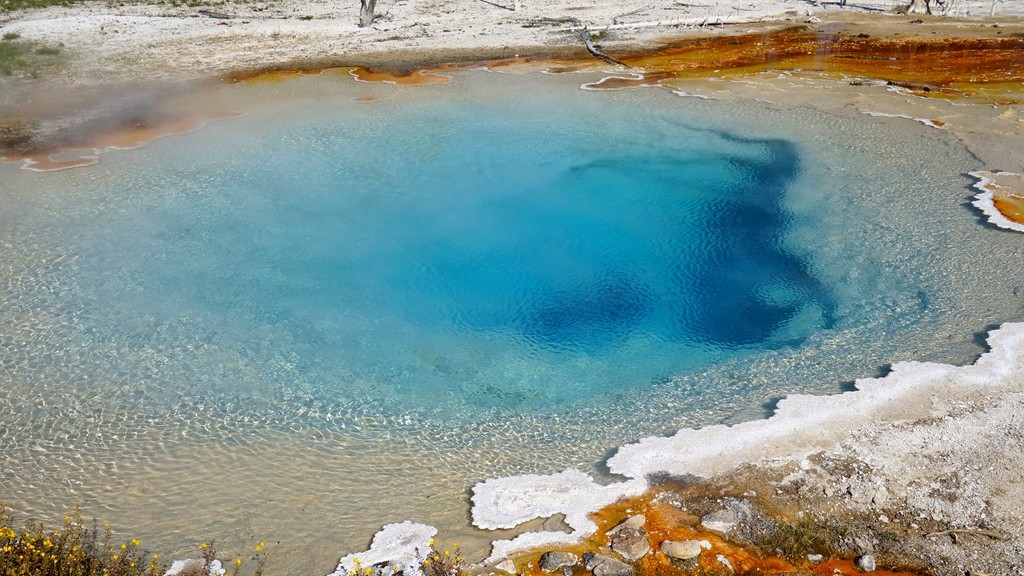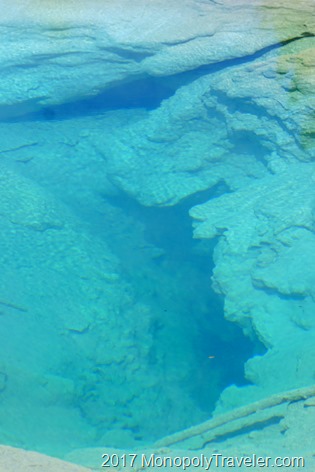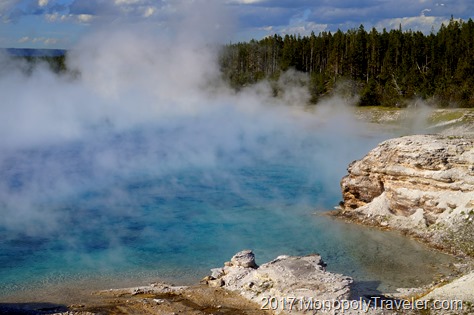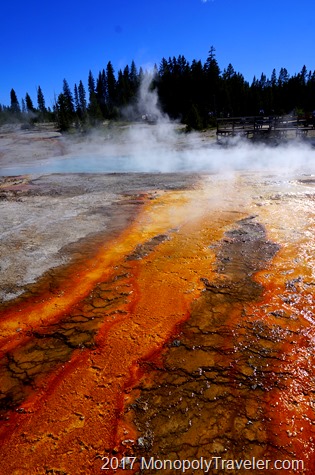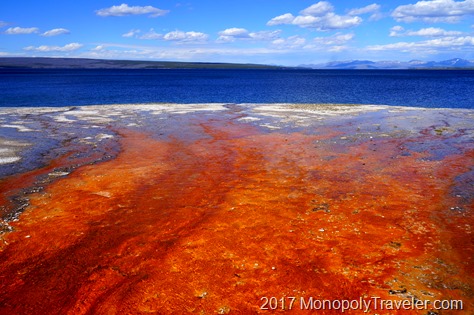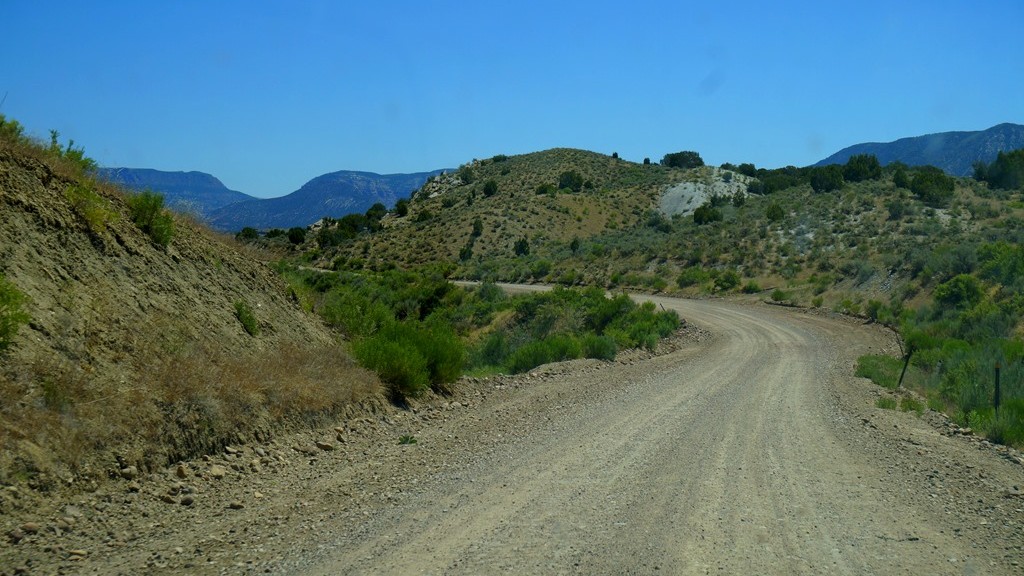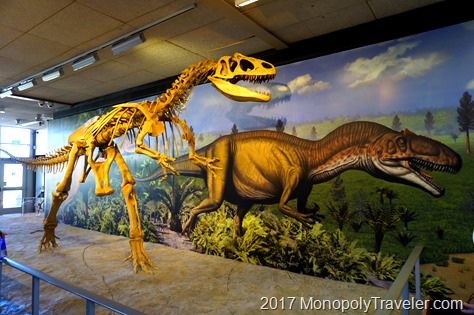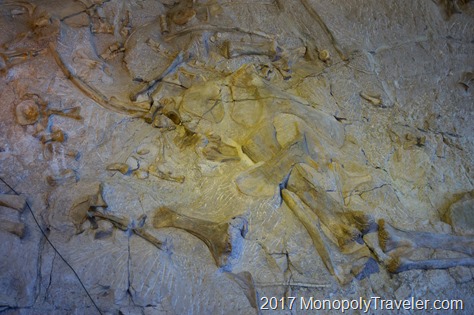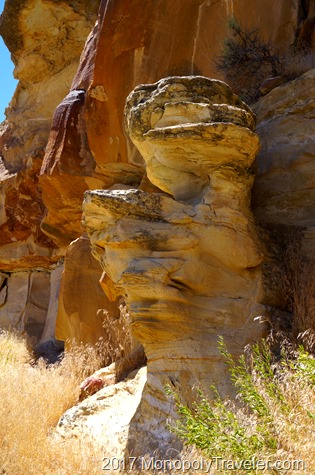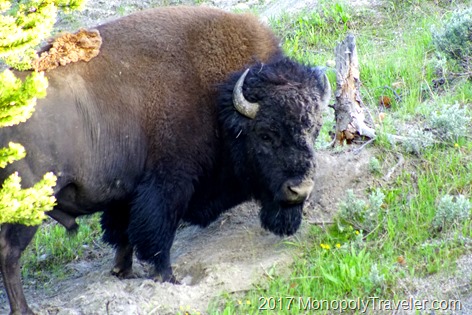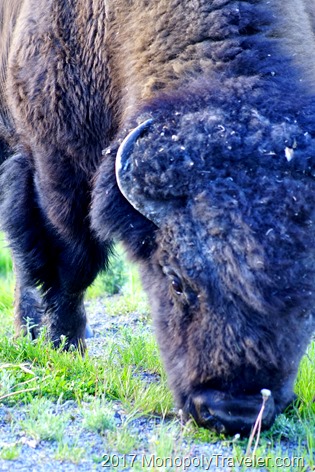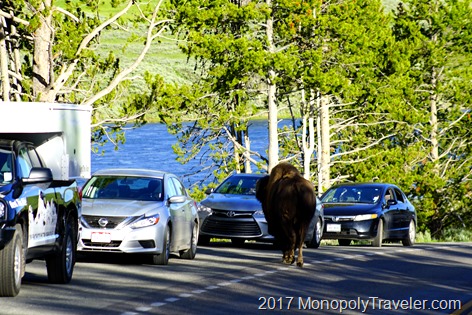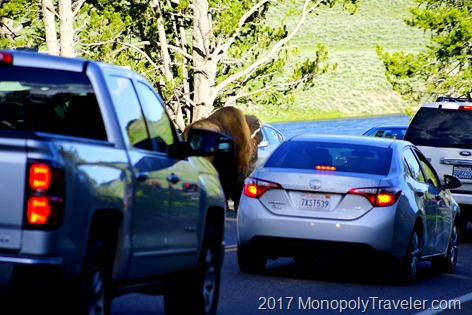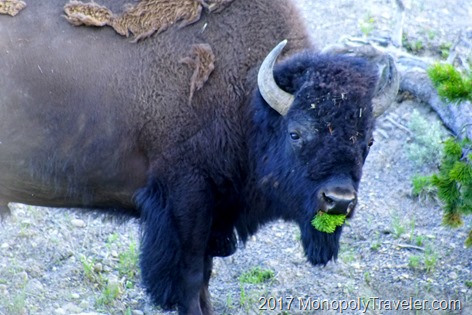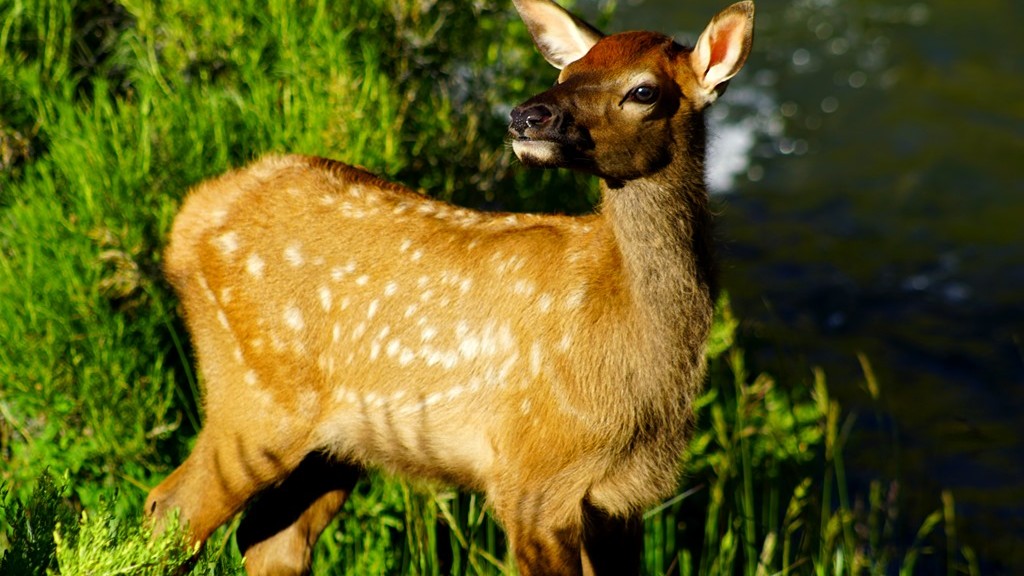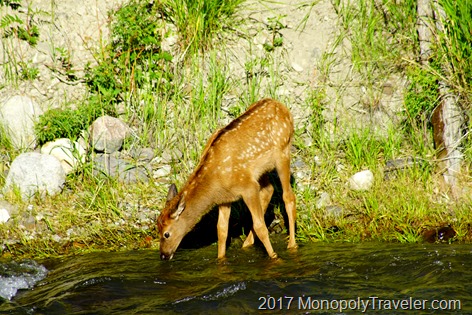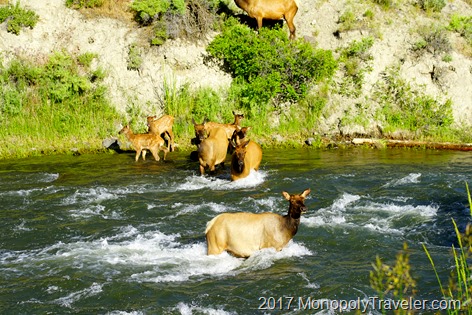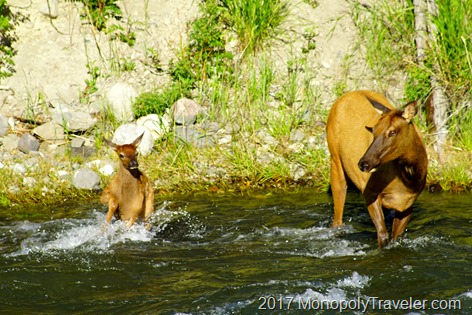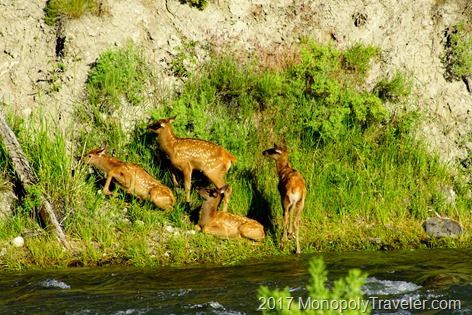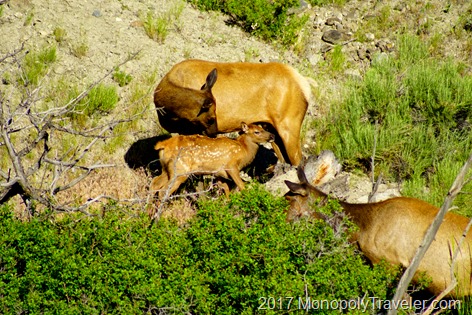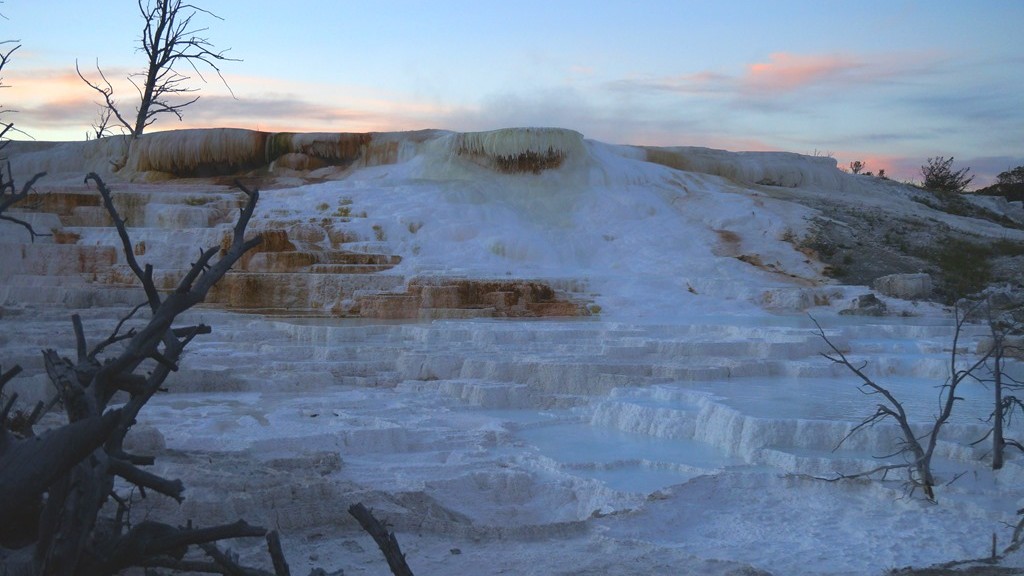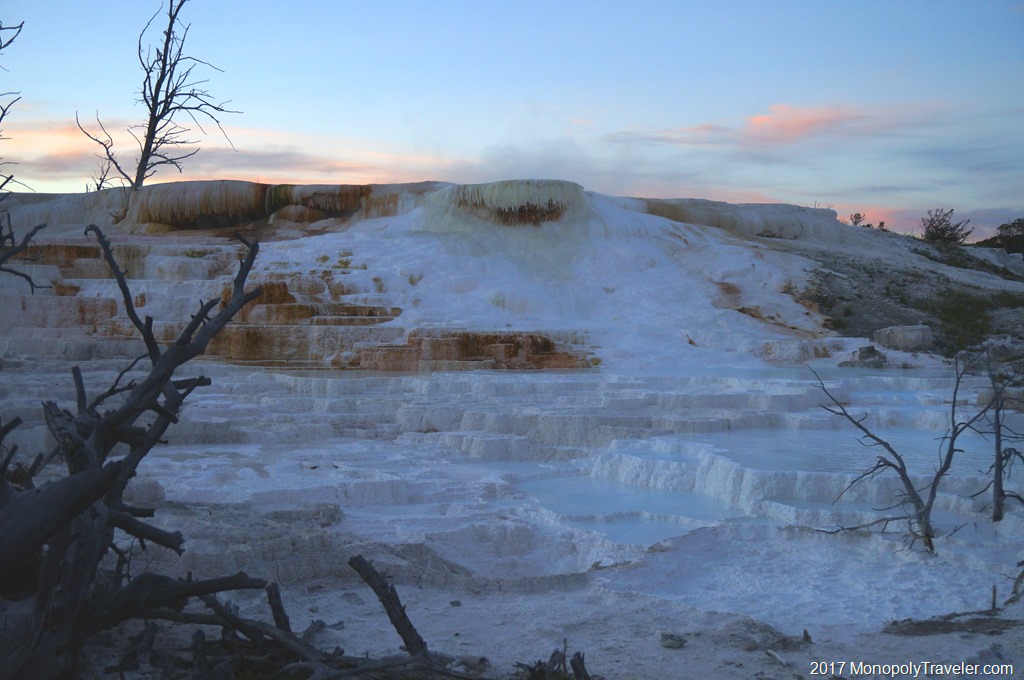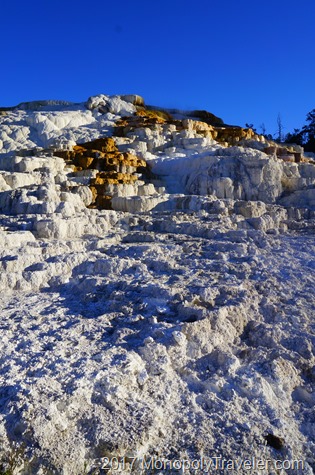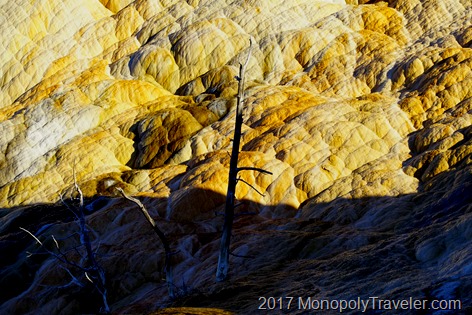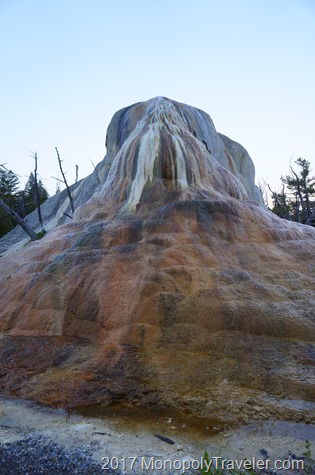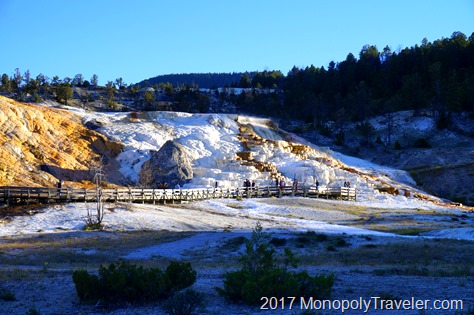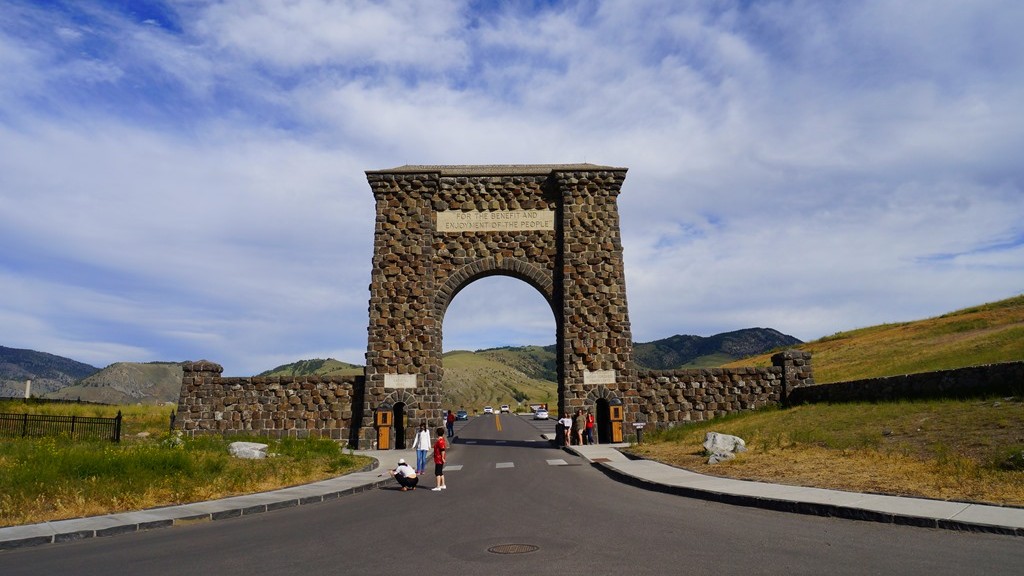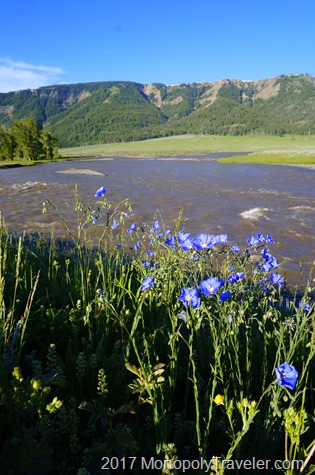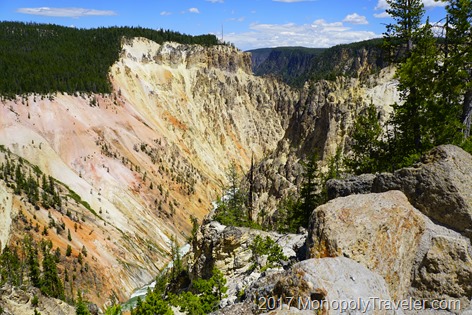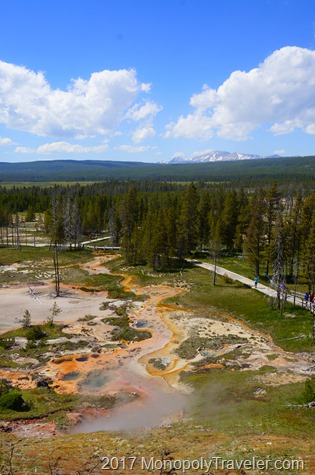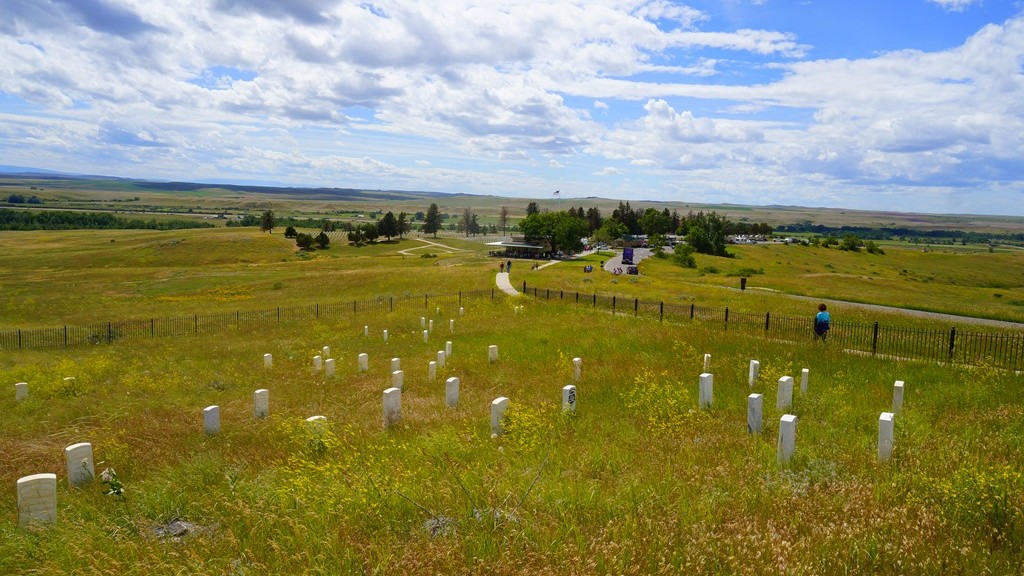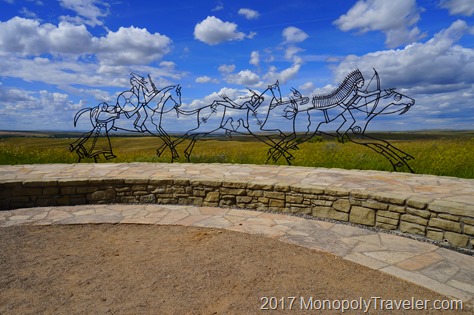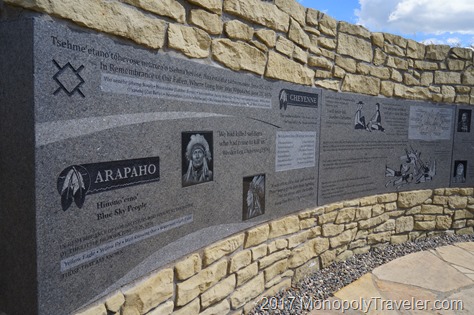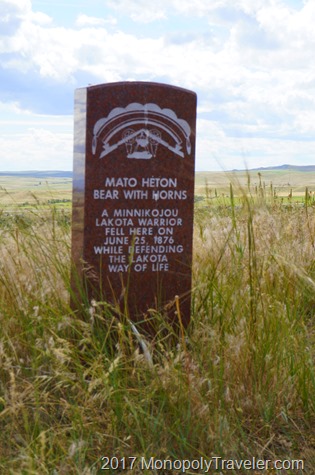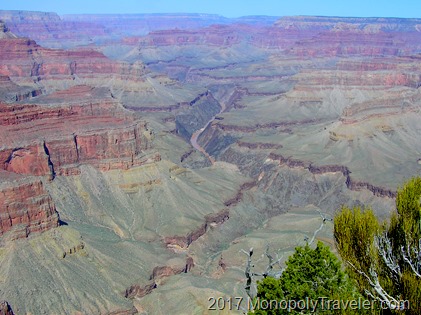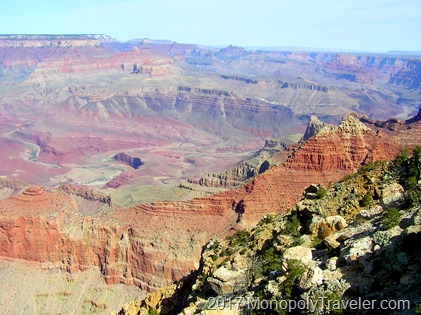There are several reasons to visit Yellowstone National Park: The natural beauty of the landscape, geyser watching such as Old Faithful, Looking at colorful hot springs, and looking for wildlife. Most desired to see here are bears and wolves but they certainly require effort to find. Geysers and hot springs were something I was looking forward to seeing but the opportunity to see a bear and/or wolf was what I was most hoping to see. Everywhere else I’ve hoped to see a bear ended unsuccessfully and this was my last chance during our Monopoly travels.
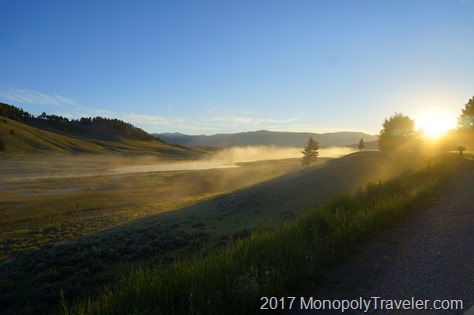
On our third day in Yellowstone I woke up before sunrise and snuck out of our hotel in search of early morning wildlife. My plan was to enter from the Roosevelt entrance and drive to Lamar valley in hopes a wolf pack was on the move. On the way, as the sun was rising, I stopped to photograph the foggy valley as the sun rose above the horizon. Ready to continue to my destination I looked again and there in the shadows was a blacktail deer with her two fawns. What a great way to begin this morning! After watching for a few moments I moved on to get to the popular Lamar Valley
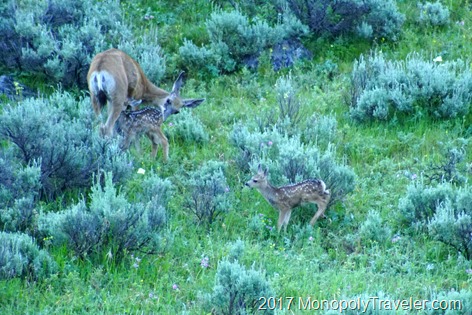
As I drove back and forth through the valley I only saw hundreds of Buffalo roaming and grazing along with the occasional Pronghorn Antelope. Some people next to me had spotted a grizzly bear but I could not see it as it was several miles away and they were using a spotting scope. A little disappointed after a couple of hours, I looked around and noticed that most of the people also in search of wolves had left so decided it was time to head back to the hotel and re-join the rest of the family. A short drive away I ran into a major road block with people all looking at a hillside miles away. Deciding to stop I found a place to park, got out, and began listening to others talk. Apparently wolves had been spotted in this area but where out of sight at the moment. After awhile of looking through the binoculars I did see one of the wolves but it was so far away it was difficult to positively identify for me. Others nearby did confirm it was a wolf though so I was lucky enough to see that.
Fortunately this was not the end of my luck in search of these great predators. On another day, driving back to our hotel from watching Old Faithful there was another encounter. We had an hour and half drive ahead and I was exhausted from the day so my wife was driving while I rested in the passenger seat. Night was falling fast so there wasn’t much to look at. About 30 minutes into our drive something was right there in the road in front of our car. Karen slammed on the brakes almost hitting a wolf staring briefly at us before moving on to the should near our car where it stopped to watch us before becoming a little uncomfortable with us still stopped. Still in disbelief we gazed at this wolf wondering if there were others nearby when another moved slighter higher up from the road. All we could really see was it’s outline and eyes as this was a black wolf blending in extremely well with the surroundings. All of us now on fully awake we continued on in complete amazement that we were that close to wild wolves which so many desire to see but don’t. Because it was so dark and all of this did happen relatively quickly I was unable to get the camera and snap a photograph. Only memories exist of this experience but one I’m sure we won’t forget.
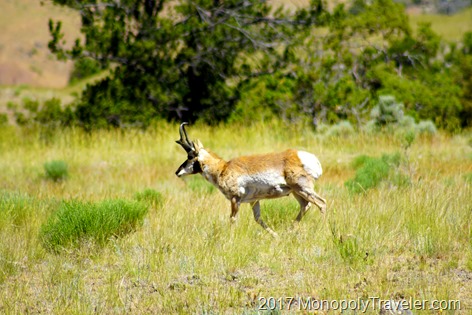
Returning to my morning drive back towards the hotel, I drove around a corner after seeing the far off wolf and there was another traffic jam. Once again I decided to quickly find an available parking spot and see what was causing this temporary ruckus. Quickly I spotted a bear with its cub grazing near a creek below. Finally success! after all of these years hoping to see one here was a bear and cub. I watched as long as these bears remained in sight before returning again to my car. Just before getting in I heard someone say another bear was in a field nearby. After a few seconds I spotted that one and watched as long as I could photographing when ever the opportunity arose. Imagine that? Two bears! What luck. Ok now it really was time to get back with the family as the morning was nearing the end.
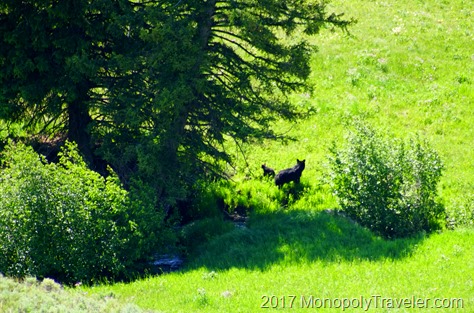
Continuing on there was yet another traffic jam although smaller than the previous two so I stopped to see what was there. Some of the other bystanders said it was a lone wolf. Curious I got out my camera and began scanning the area and found what they were pointing to. Unfortunately I had to inform them this was a coyote and not a wolf. They were somewhat disappointed but still enjoyed watching as it meandered among the sage brush. It was fun to see but I really needed to get back so off I went without further traffic jams. Add to this the elk from an earlier visit and plenty of bison and my thirst for seeing wildlife was temporarily filled. You can click on the links above to view those stories.
All in all I ended up seeing 7 bears during our brief time in Yellowstone over three different occasions. The top picture is from our morning driving one last time though Yellowstone National Park on the way to Grand Teton National Park. Another traffic jam alerted us to wildlife near the road so we stopped and ended up watching this bear graze for about 45 minutes. A lot of fun to see definitely making me want to return another time.
